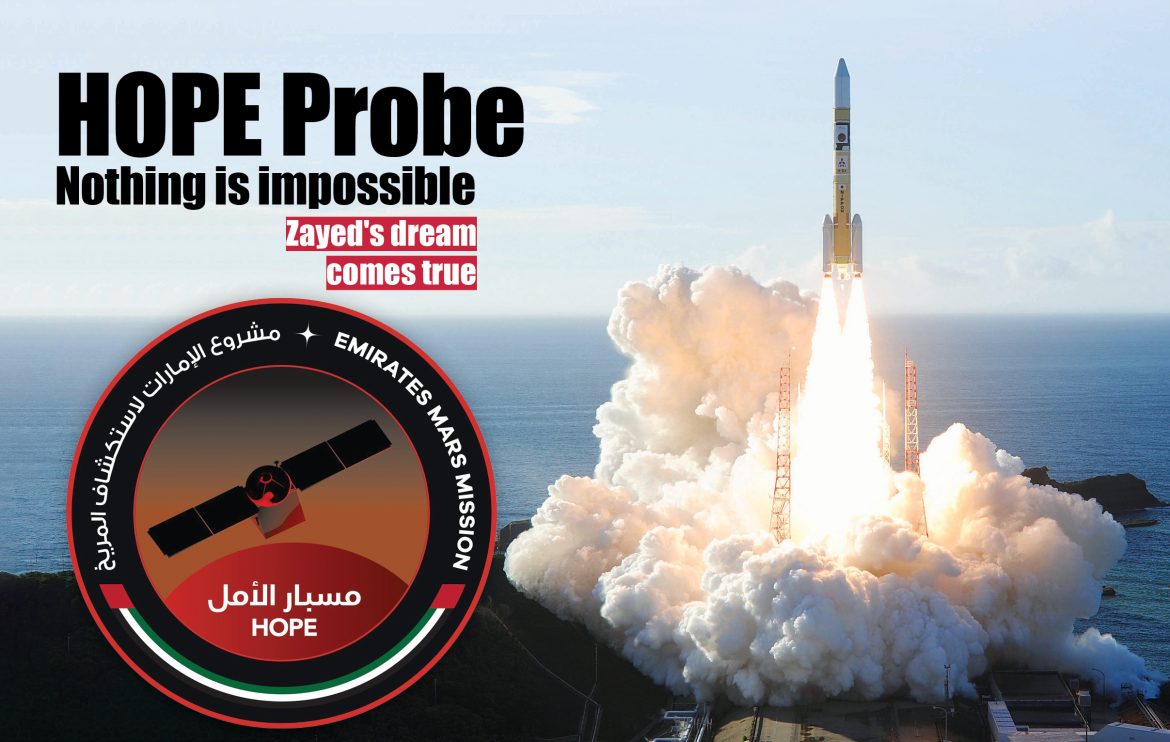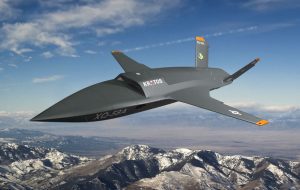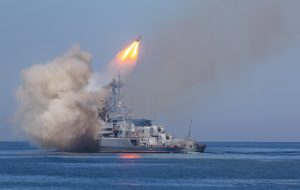When the founding leader, the late Sheikh Zayed bin Sultan Al Nahyan, may God rest his soul in peace, met with the US National Aeronautics and Space Administration (NASA) team responsible for the Apollo Mission to the moon in the 1970s, no one in the world expected that Zayed’s children (Eyal Zayed) would manage, years later, to send the first Arab astronaut to the International Space Station in September 2019. Shortly afterwards, they sent a probe (Hope Probe) to Mars in July 2020. Not only this, they also planned to create a human colony on the surface of the Red Planet by 2117, as part of the UAE’s ambition to be the world’s leading nation by the centenary of its founding in 2071. Space exploration is at the heart of this ambition as clearly indicated in the “UAE Vision 2071”, which “highlights the importance of excellent quality of education. Certain areas of focus in education include advanced science and technology, space science, engineering, innovation and health sciences.”
Thus, the UAE confirms its worthiness to be among the leading developed countries in the field of space. It does not recognize the ‘impossible’, which has no place in its dictionary. This has been expressed by His Highness Sheikh Khalifa bin Zayed Al Nahyan, President of the UAE, may God protect him, by saying that the launch of the ‘Hope Probe’ on its historic journey to Mars under the slogan of “Nothing is impossible” constitutes a national and Arab achievement and an advanced Emirati push in the process of building global knowledge in space. It was also confirmed by His Highness Sheikh Mohammed bin Rashid Al Maktoum, Vice President, Prime Minister and Ruler of Dubai, may God protect him, by saying that the Hope Probe embodies the culture of possibilities deeply rooted in the UAE’s approach, philosophy and journey of accelerating development since the foundation.
An Unprecedented Historic Event
There is no doubt that sending a probe to Mars by the UAE is an unprecedented historic event in the full meaning of this word. It has significance and great meanings for the country and what it aspires to achieve during the next fifty years of its history, as well as its important meanings for the Arab world and its peoples, in general:
1 “We are not less than the developed nations in terms of diligence and thought”: On the one hand, the United Arab Emirates, by sending its probe to Mars, would be the only Arab and Islamic country to accomplish this achievement. It is one of just nine countries, at the global level, working to explore the Red Planet, including the United States of America, China, India, Russia and other major powers with a long history in scientific and technological development. The UAE thus highlights that it is able to be among the developed countries in the world. It is also one of the important message of Hope Probe, as asserted by His Highness Sheikh Mohammed bin Rashid Al Maktoum, UAE Vice President, Prime Minister and Ruler of Dubai, may God protect him, by saying, “Our journey to space represents a message of hope to every Arab citizen that we have the innovation, resilience and efforts to compete with the greatest of nations in the race for knowledge.”
2 A message to the Arab world: On the other hand, by this step, the UAE does not only confirm its Arab and Islamic leadership, but also represents a source of pride and motivation for the Arabs, as His Highness Sheikh Mohamed bin Zayed Al Nahyan, Crown Prince of Abu Dhabi, Deputy Supreme Commander of the Armed Forces said, because it confirms that the Arabs are able to attain progress and real competition in the fields of science and technology. This has been highlighted by His Highness Sheikh Mohammed bin Rashid by saying that the UAE will be “the main authority on space in the region, and that the message of the UAE to the Arab world regarding the ability of the people of the region to compete globally”. It has also been confirmed by His Highness Sheikh Mohammed Bin Zayed when he said that the UAE “will be the first Arab country to reach Mars, and it will also constitute an integrated reference for space science, technology and industries in the region.”
3 “A critical moment between two dates”: Since the “Probe of Hope” was announced in 2017, it has been planned that the probe will reach Mars in 2021. This did not happen randomly or by chance, but rather took place with a goal and a message, because the UAE has always been keen in its development paths to send important messages, both locally and abroad. The goal from the beginning was that the probe’s arrival in Mars should coincide with the 50th Anniversary of the Union of the UAE (1971-2021), for the country to confirm that it would start with this probe a new stage in its history for the next 50 years of development, progress, and uniqueness higher ambition whose limit is space. This meaning was best expressed by His Highness Sheikh Mohammed bin Rashid Al Maktoum, and His Highness Sheikh Mohamed bin Zayed Al Nahyan. His Highness Mohammed bin Rashid said, “The UAE’s launch of the Hope Probe to Mars will be a watershed moment between two histories… fifty past years… and fifty years to come… The probe is the fruit of the fifty-year journey of building people … Thank God we see its fruits today. We rejoice and take pride in them among world countries and nations.” It is the same meaning expressed by His Highness Sheikh Mohammed bin Zayed Al Nahyan when he said that the probe represents an” important turning point in the country’s march to develop the space sector and the exploration of Mars, and an essential step in the preparation for the next fifty years; it is also an important tool to make the future and develop human knowledge.”
4 With our youth, we progress and achieve our aspirations: Since the era of Sheikh Zayed, may God rest his soul, the UAE has wagered on its youth, and considered them its true national wealth. This is the path that was followed and enhanced by His Highness Sheikh Khalifa bin Zayed Al Nahyan, President of the State, may God protect him. Therefore we see that young people, Male and female, are the backbone of all major projects, from the Nuclear Energy Project for Peaceful Purposes to the space project. In this context, statistics indicate that the average age of employees at the “Mohammed Bin Rashid Space Centre” in Dubai is 27 years, and that about 40% of workers in the center are female. In this context, His Highness Sheikh Khalifa bin Zayed Al Nahyan, President of the UAE, commented on the launch of the Hope Probe, “The completion of the Hope Probe with national hands is a very important message that we have long emphasized, saying that belief in science and investment in the energies and potential of young people are our winning bet to win the future making battle and put our imprints on the path of human civilization.”
That is why His Highness Sheikh Mohammed bin Rashid and His Highness Sheikh Mohamed bin Zayed always highlight their pride in the youth of the UAE and their role in the Emirati space program in general, and the Hope Probe in particular. This “confirms our visions and orientations by enhancing reliance on national cadres and competencies.” Perhaps what His Highness Sheikh Mohammed bin Rashid said on the occasion of signing the last piece of the “Hope Probe” is the best expression of this meaning: “The achievement of the Hope Probe constitutes a message for the citizens and residents of the UAE and for our brothers in the Arab world and our friends around the world that faith in youth and investing in their capabilities potential are the winning bet for every country that sets its sights on making the future and putting its distinctive imprint in the march of human civilization .. Today we celebrate the elite of Emirati experts, scientists and engineers with whom we raise our heads high to embrace space.” The same meaning was confirmed by His Highness when he, and His Highness Sheikh Mohamed bin Zayed Al Nahyan, were briefed on the final preparations for the launch of the “Hope Probe”, and the scientific and technical tasks supervised by the UAE probe team on July 18, 2020, where His Highness, speaking on behalf of the national cadres in the probe project said, “These talents of young men and women engineers, who have learned and reached these stages, are the goal of this whole project.” This is how the UAE always bets on its citizens and human cadres in all fields, and its bet is always successful.
5 “The power of hope shortens the distance between the earth and the sky”: With this wonderful statement, His Highness Sheikh Mohammed bin Rashid and His Highness Sheikh Mohammed bin Zayed signed the last piece of the Hope Probe in January 2020, expressing an important and essential message of this probe, namely the Emirati message of hope to the Arab peoples in particular, and the people of the region in general, that progress is possible, and that hope and will are the drivers of this progress. In this context, His Highness Sheikh Mohammed bin Rashid said, “Hope Probe is a vivid translation of the power of hope in inspiring generations and motivating them to make a positive difference in people’s lives… Hope Probe is the focus of the UAE’s message of strengthening the human partnership in the outputs of scientific research and exploration and employing them for the benefit of humanity.” This enhances the role of the UAE and its location as a point of light, and ensures that it will always remain “the hope of the region from which light shines so that people come to it, reach it, cooperate and contract with it.”
6 Knowledge is our way: In its quest to be one of the best countries in the world according to Vision 2021, and the best country in the world according to Vision 2071, the UAE is taking the path followed by all nations that have made progress and carved for themselves their privileged place on the world map; that is, the path of science. Hope Probe is one of the most important manifestations and milestones of this path, because it is based on modern science in one of its most important fields, which is space, which has always been viewed as the field of developed countries and the field of their competition, and that other countries are unable to enter it. However, the UAE offers, through the “Hope Probe”, a new vision of progress, which does not recognize the rigid division of the world into a first world, a second world, a third world, or into developed and developing countries, because it has proven its ability to make a pioneering development epic titled: From the desert to space, in a record period of time. The leadership of the UAE always advises young people to learn and excel in science, and compete with developed countries. It imbues them with confidence in the ability to achieve this. Therefore, work on the “Hope Probe” did not start from the date of its announcement in 2017, but extended over many years of work and effort to build a scientific base of qualified national cadres who are able to fulfill the country’s aspirations in various fields.
7 “Our ancestors looked at the stars on their marine trips to build their glories … Today our sons look at them to build their future.” These words of His Highness Sheikh Mohammed bin Rashid Al Maktoum indicate one of the important aspects of the “Hope Probe” project: that through this probe, the UAE revives the glories of the forefathers who were the best Arab and Muslim scholars in the field of astronomy… who preceded their era and enlightened the world with their great knowledge and discoveries. If our scientific heritage in this field was interrupted for many years of absence from civilization, then the “sons of Zayed” reconnect what was interrupted, follow the guidance of their grandparents and assure the whole world that the Arabs are capable of making their future and resuming their civilization.
Emirati Space Ambition .. the Path and Goals
Although 2017 is the year in which the real space ambitions of the United Arab Emirates were announced, the Emirati ambition in this field dates back to many years ago, specifically since the aforesaid meeting of Sheikh Zayed, may God rest his soul, with the American astronauts. Later, the UAE started its steady steps in the space field up to Hope Probe:
1 First Steps: In April 1997, Thuraya Telecommunications Company was established in April 1997, YahSat Integrated Satellite Communications Services was established in 2007, then Emirates Institution for Advanced Science and Technology in 2006, before it merged with the Mohammed Bin Rashid Space Centre In 2015.
2 UAE Space Agency: In 2014, the “UAE Space Agency” was established. The agency’s goals were, according to its establishment decree:
• To organise, regulate and support the space sector in the country and to enhance its position in this area.
• Encourage the development and use of space science and technology in the country and advance within the industry.
• The establishment of international partnerships in the space sector and to enhance the role of the state and its position in the space sector.
• Contribute to the diversification of the national economy through the space sector.
• Raise awareness of the importance of the space technologies, enhance national capabilities and encourage peaceful application of space research.
As for the agency’s jurisdiction, it is as follows:
The Agency is focused on the development of policies, strategies and plans related to the space sector that are approved by the Council of Ministers. It will provide advice and guidance for national space programs, work to resolve the challenges faced, and support research and studies for theoretical and applied areas within space. The Agency will also be involved in documenting and disseminating information, working on the development of human resources and support educational activities in the space sector and attract national talent into the industry. The Agency will provide opportunities and scientific missions in the space sector, in coordination with the national authorities in the country and abroad; it is a key priority for the Agency. It will assist the establishment of investment projects in the industry and managing them economically.
3 Mohammed Bin Rashid Space Centre: In 2015, His Highness Sheikh Mohammed bin Rashid Al Maktoum, Vice President and Prime Minister and Ruler of Dubai, issued a decree to establish the Mohammed Bin Rashid Space Centre, and merged the Emirates Foundation for Advanced Science and Technology (IAST) in it to do the work on research, projects and studies related to space science, in a way that supports the UAE’s directions in supporting this sector, and the formation of national and knowledge scientific competencies through it. The center will also prepare, implement and oversee all stages of sending the UAE probe to explore Mars, and work on projects related to satellite science and applications, all specialized projects, and advanced technology projects assigned to it by the concerned authorities.
4 The National Space Program: In 2017, His Highness Sheikh Mohammed bin Rashid Al Maktoum, Vice President, Prime Minister and Ruler of Dubai, and His Highness Sheikh Mohamed bin Zayed Al Nahyan, Crown Prince of Abu Dhabi and Deputy Supreme Commander of the Armed Forces, launched the National Space Programme to achieve the following goals:
– Launching the Emirates Astronauts program, under the supervision of the Mohammed Bin Rashid Space Centre, to prepare Emirati astronauts and build solid ground for Emirati cadres specialized in space science. Also sending the first Emirati astronaut to the International Space Station, to carry out scientific experiments that benefit humanity, and to send the “Hope Probe” to Mars on the fiftieth anniversary of the foundation of the UAE.
– Establishing the first scientific city to simulate life on Mars, which includes a Mars museum and specialized laboratories, in addition to the Zero Gravity Experiment Laboratory.
– Launching the Arab Space Exploration Program, which is a program to transfer knowledge and expertise in space science and technology, with the universities and institutions of Arab countries, to benefit from the most prominent Arab minds in this field, and to create a data platform for Arab space scientists.
– Launching the satellite manufacturing complex within the Mohammed Bin Rashid Space Centre, making the UAE the first Arab country to manufacture satellites completely.
– Establishing the International Space Settlement Council, in cooperation with specialized universities and international research centers. Its membership includes the best international experts in space.
5 The Mars 2117 Project: In addition to the above, the UAE launched the “Mars 2117 Project”, at a cost of AED 500 million, on an area of one million and 900,000 square feet, to form the largest space city built on Earth as a model for the planet Mars. The project includes laboratories for food, energy and water, and conducting various agricultural tests that meet the future needs of the country in food security, in addition to an international museum that displays the most important achievements of mankind in the field of space, as well as advanced laboratories that simulate the terrain of Mars and its harsh environment.
6 The National Space Strategy 2030: In March 2019, the National Space Strategy 2030 was adopted, which included 18 programs and 71 initiatives, within the framework of six strategic goals: providing global and competitive and pioneering space services; developing advanced local capabilities in research, development and manufacture of space technology; launching inspiring scientific and exploration space missions; building a high national culture and experience in the field of space; enhancing active local and global partnerships and investments in the space industry, and ensuring a supportive legislative infrastructure that keeps pace with the various future developments of the sector.
The United Arab Emirates has been keen on setting a clear legislative framework for the space sector. Then the law on the regulation of the space sector was issued in late 2019, which stipulated that the UAE Space Agency has the jurisdiction to regulate the space sector in the country. This law is considered the first of its kind on the Arab and Islamic level. It has come with the aim of creating a legislative and regulatory environment in the UAE space sector that is in harmony with other laws and regulations in the country, respects international treaties, protects the interests of the state, reconciles economic and commercial requirements, and encourages innovation, security and safety requirements, and the preservation of the environment.
From the above, the following
is clear:
1 Thoughtful steps: The United Arab Emirates has pursued its ambition towards space, with deliberate steps for years, whether at the level of institutions, plans, strategies, or the legislative framework governing all of this. That is why it has achieved what it has achieved, and it will achieve more during the coming period, God willing. This is always the case for the UAE.. it does not take any step except within accurate calculations, specific goals, and clear paths, drawing on science and planning.
2 Greater ambition: The ambition of the Emirati space is consistent with other ambitions of the country that aims to give it a leading position at the regional and global levels. Therefore, the UAE space sector is the largest at the region level, in terms of investments, the size of projects, and the number of companies, where the volume of state investments in it amounts to more than AED 22 billion.
3 Diversification of income sources: The Emirati space project is in line with the country’s strategy to build a knowledge-based economy and diversify its sources of income away from oil, given that space technologies have a significant role at the economic level. In this context, the United Arab Emirates is the first Arab country to manufacture satellites completely, through the satellite manufacturing complex within the “Mohammed Bin Rashid Space Centre”. It also has the largest number of satellites at the level of the Middle East and Africa.
4 An escalating global trend: In its orientation to space, the United Arab Emirates is in harmony with a growing global trend in caring for space, so the value of the space industry in the world is estimated at $ 300 billion, with a growth rate of 8% annually. According to Bank of America Merrill Lynch’s estimates, the value of the space market in the world will reach about $ 350 billion, which will rise over the next three decades to reach $ 2.7 trillion.
The share of the United States of America in the total space economy is $ 43 billion, equivalent to 13% of its size, while the rest of the countries involved are $ 36 billion, or 11%. Space industrial and commercial activities amounted to approximately $ 128 billion, representing 39% of the size of space economies, and the share of service activities related to space products amounted to $ 123 billion, or 37%.
In this context, it is estimated that Germany is working on attracting investments in the space sector amounting to one trillion dollars by 2040, in response to the distinguished position that European, Asian and US companies have in this sector.
In November 2019, the members of the European Space Agency agreed to a budget of 14.4 billion euros for the purpose of space exploration. The head of the agency, Jan Werner, said: “It is a surprise, the amount is greater than what I proposed.. This is good.” Germany was the largest contributor to the budget, with 3.3 billion euros, followed by France with 2.7 billion, Italy with 2.3 billion and Britain with 1.7 billion.
Moreover, there is an increasing trend in space investment by private commercial companies, so it is no longer a monopoly of governments. Companies, such as SpaceX and Virgin Galactic, have begun to market space exploration programs, valued at $ 13 billion during the past decade. It is estimated that space trade “will soon exceed 10 percent of the global economy.”
Within this orientation, there is an interest in returning to the moon, mainly because the strong presence on the moon is necessary to send people to Mars. In this regard, one scholar believes that “this is the true goal of humanity”, i.e. the goal of humans inhabiting Mars”, but he confirms that to achieve this goal “We will have to learn first how to beat the moon.”
All of the above means that the UAE is keen to engage in a large global trend to care about space, whether at the government level or at the level of private companies, as it is a fertile area for investment in the present and the future.
“Hope Probe” … Why Mars?
Perhaps the important question that can be asked in the context of talking about the “Hope Probe” is: Why is the interest in Mars specifically, and what are the goals of the UAE behind sending its probe to the Red Planet?
According to the vision of “Hope Probe,” the United Arab Emirates aims to:
– Cooperate and coordinate with the global scientific community which is interested in Mars to try to find answers to questions that were not addressed by any of the previous missions of space.
– Study the causes of the dissolution of the upper layer of the Martian atmosphere by tracking the behaviors and path of the exit of hydrogen and oxygen atoms, which form the basic units for forming water molecules.
– Investigate the relationship between the lower and upper atmosphere layers on Mars.
– Present the first image of its kind in the world about how the atmosphere of Mars changes throughout the day and between seasons of the year.
– Observe weather phenomena on Mars, such as dust storms, temperature changes, as well as the diversity of climate patterns according to its varied topography.
– Discover the reasons behind the erosion of Mars.
– Search for any relationships between the current weather and past weather conditions for the Red Planet.
The exploration of Mars has been an invaluable global goal for decades. The first expedition came to Mars in the year 1965, with the flight of the NASA Mariner 4 satellite; in 1976, the two Viking spaceships – and Viking 2 – landed on the surface of the planet and conducted experiments on the traces of life on its surface; in 1996 NASA’s Mars Pathfinder spacecraft landed on Mars, and in 2002 a water ice buried on Mars surface was discovered.
Despite these attempts, the Red Planet is still the target of much exploration effort. It is viewed as a difficult target for exploration attempts. This stimulates the whole world to exert more efforts to explore it. Therefore, in 2020, in addition to the “Hope Probe”, there are many spacecraft heading towards the Red Planet, including “NASA’s Mars 2020 Rover”, Exo Mars” of the European Space Agency and the Russian Federation, the Chinese Mars Mission for 2020. , And the “Orbital Mars Mission 2″ of the Indian Space Research Organization during 2021-2022. SpaceX Company plans to launch its Big Falcon Rocket to Mars with passengers on board in the year 2024.
But why all this interest in Mars by the world, including the UAE, and why is the State’s targeting the Red Planet by exploration.. a sound trend that reflects insight?
Based on numerous reports and studies, as well as the opinions of scientists and specialists in the field of astronomy, there are many considerations that justify this great interest in Mars, and answer the important question:
Why Mars? The most important of them are:
1 “Establishing a permanent human colony on Mars is not an option, but a necessity.” This is how specialist scientists, mainly the late famous British mathematician Stephen Hawking, who said in one of his lectures at NASA, “If the human race wants to continue for another million years We must dare go to a place where no one has gone before.” That is, to ensure the survival of the human race, as scientists say, requires searching for other planets that are viable for life, because “history shows that survival as a human race on this small blue point flying in space is certainly difficult and not guaranteed; dinosaurs are a classic example.”
Besides, the excessive increase in population density on the surface of the earth, the rapid depletion of natural resources, and the complete extinction of animal species threaten the survival of the human race itself; therefore, it is necessary to search for other planets to live on and use their resources.
In this context, Mars is the appropriate place to search for the possibility of human life on it, because the length of the day on it is roughly equivalent to the length of the day on our planet, in addition to the presence of icy water on its surface. Moreover, there are similarities between Mars and the Earth, as well as relative proximity between them with an average distance of 225 million km. Mars, too, is a rocky planet of the same type as the Earth. There are those who believe that the origin of life on Earth may have originally come from Mars. In this context, the British Astronomer, Christopher Impey, says, “We cannot exclude the fact that a Martian rock that has life on its surface landed on the earth and marked the beginning of life on Earth. This can only be actually tested by finding life on Mars.”
The French Professor Jean-Marc Salotti believes that he will need at least 110 people to start a new civilization on Mars, and that “reaching Mars is an issue of exceptional importance for the future of space science successes, and perhaps for the future of humanity in general.”
In the same context, scientists discovered that the soil of Mars can be used to produce a stronger material than reinforced concrete, that is, it can be used to build the first human colony on the Red Planet.
NASA chief scientist Dr. Jim Green warned that the world may not be prepared to discover life on another planet, although that might take only a few years. He believes that “the discovery of evidence about the existence of aliens or life on Mars will be quite revolutionary. I don’t think we are ready for the results. I have been worried about that because I think we are about to find this evidence and make some announcements about it.”
2 Improving life on Earth: i.e. through the use of advanced technology in exploring Mars to improve people’s lives and address the problems facing them. In this context, one scientist believes that “only by pushing humanity to its maximum limits, and deep into space, we will be able to make discoveries in science and technology that can be adopted to improve life on Earth.”
3 Resolving the lack of resources on Earth: In this context, some experts believe that exploring Mars may “help in solving the problems of the lack of resources on our planet. Many resources are running out, and we mainly depend on some of them; copper, for example, may be depleted in the future.”
The UAE Space Program … Many Developmental Dimensions
Space programs are an essential source of support for national economies. For example, the British space industry is one of the largest sources of income for the government.
In this context, the UAE space program, at the heart of which is heading for Mars, involves many important developmental aspects that are in the interest of the UAE economy. In this regard, the National Space Policy highlights the importance of the space program for the following:
– Continue to develop the role of the space industry in expanding the UAE economy based on knowledge and high skills.
– Enhance the contribution of the space industry to diversifying the UAE economy.
– Develop effective methods to attract space companies and increase investment in the UAE space industry.
– The goals of the plan to promote space investment are:
– Sustain the growth of space companies and sector in the United Arab Emirates.
– Increase the contribution of the UAE space sector to diversifying the national economy and expanding the knowledge economy.
– Support other national interests.
– Strengthen partnership at the national and international levels.
At a symposium organized by the Trends Center for Research and Consulting in Abu Dhabi on the UAE space program in July 2020, Eng. Amer Al Ghaferi, Senior Director of Space Engineering Department, at the Mohammed Bin Rashid Space Centre, indicated that space exploration is the key to achieving development, as well as the development of other sectors and sciences, and harnessing them to serve humanity. He pointed out that there are 15 international partners that the UAE cooperates with in the space field, and that the Hope Probe depends mainly on the national competencies in which the State invests, especially Emirati women who make up 90% of the workforce in the Hope Probe Project. Masayuki Goto, co-founder of Space Cupix in Japan, said at the same symposium, that the space industry is witnessing great and accelerating progress, that it can create many jobs and support development plans in different countries, that robots are an important component of the development of the space industry, and that the space sector is growing from an economic perspective, despite logistical shortcomings. Dr. Peter Martinez, Executive Director of the “Safe World” Foundation, stressed that the space sector has become an essential component in facing global challenges, and that this sector has become more global with many countries in the world entering the field of investment in it, as 90 countries in the world launched satellites for various purposes, and more than thirty countries own national space agencies today.
One of the Emirati newspapers mentioned ten economic benefits of the space program for the UAE, the most important of which are: the first, is to support education and scientific research, for the UAE scientific team within the probe of hope presented 200 new scientific technological designs, manufactured 66 pieces of its components in the UAE, and published 51 specialized scientific research and working papers, 60,000 participants have also benefited from scientific and educational programs to publicize the Emirates Mars Mission Project. The second, is to promote employment. The third, is to support the data economy, where the probe collects data on Mars and stores them in a scientific data center in the UAE through a number of ground receiving stations spread around the world, the fourth, is to enhance the diversification of the economy. The fifth, is to enhance the country’s reputation globally. The sixth, is the manufacture of space tools and equipment, the seventh, is participation in the potential city on Mars, the eighth, is the presence of international companies in the UAE, the ninth, to attract investment, and the tenth, is its contribution to the GDP.
Dr. Khalifa Mohammed Thani Al-Rumaithi, Chairman of the UAE Space Agency, numbered, in a research paper, the economic and development benefits of the UAE space program as follows: Enhancing the role of the UAE in space projects, which will enable sectors and companies to move to new markets, expand the return on investment, diversify the country’s economy, focus more on achieving breakthroughs in the field of developing new technologies in the form of patents that can be sold to foreign space agencies, transform the UAE into an emerging and ambitious space power, and consolidate the UAE’s position in space science. Space programs are also an element of national pride of the UAE.
One of the scientific studies presented the economic and developmental uses of space technology in many aspects, the most important of which are:
– Launch satellites for communications and terrestrial surveillance purposes. The number of active satellites until August 2014 is about 1235 satellites, 54% of which are communications satellites through which 35,650 satellite TV channels operate. The number is expected to be 47,000 channels over the next ten years.
– Space exploration and mining: According to a study of graduate students at the Business School of the University of “New South Wales in Australia” on the economics of space mining, building a mine and operating it on the moon is less expensive than building the largest gas stations on Earth, where the cost is estimated at $ 27 billion.
– Obtaining energy from space: For example, the Japanese Space Exploration Agency (JAXA) is working on preparing solar power satellites that have become an active field of research, studies and development for the agency, which aims to start remote transmission of energy wirelessly within 15 years, through a solar complex that weighs more than 10 thousand tons with a width of several kilometers over a fixed orbit that rises from the Earth 36 kilometers.
Conclusion
Commenting on the launch of the Hope Probe, His Highness Sheikh Khalifa bin Zayed Al Nahyan, President of the State, may God protect him, said: “On this glorious day, we remember the late Sheikh Zayed bin Sultan Al Nahyan, and his brothers, the Founding Fathers who laid the solid foundation for a country capable of moving towards the future in confidence and appreciation.” This statement is a precise summary of the reality and future of the development path of the UAE in the field of space and elsewhere. The structure has been built on strong foundations, so it survived, evolved, grew, and rose, and it will continue to rise, God willing, because the base that the founding leaders set is a solid base both on the material level or the level of values, morals and human beings.













